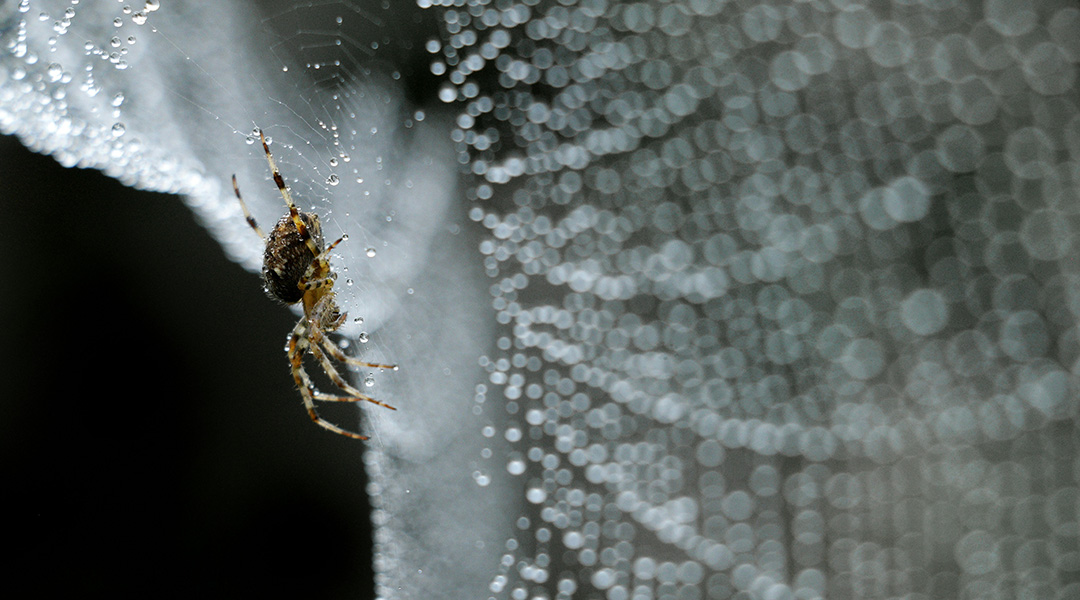Renowned for its strength, flexibility, and compatibility with human tissue, spider silk is a tantalizing material for biomedical researchers. However, despite its amazing properties, obtaining a reliable and cost-effective source of the precious silk remains a barrier to it’s widespread use.
The fiercely territorial and cannibalistic nature of arachnids makes farming impossible. While synthetic biology has produced quality silk using bacteria like Escherichia coli or yeast cells, spider silk production remains tangled in scalability issues.
To cut through the web of problems, a team of scientists from Japan have developed tobacco plant cells that could produce spider silk, but it wasn’t until they investigated a section of the silk proteins whose function was unknown at the time that the group discovered a way to improve the quality and yield of silk protein production.
Easy for spiders, difficult for scientists
In nature, spiders effortlessly produce, and process silk proteins called spidroins in specialized glands. These organs provide the precise chemical environment required for the animal to weave together spidroins into the versatile silk.
Artificially weaving threads from proteins produced by bacteria or yeast in the lab has proven incredibly difficult. Using plant cells to produce spidroins is seen as a potential solution because plant cells can more reliably produce larger silk proteins, something that bacteria and yeast struggle to do without introducing errors into the protein sequences.
One of these proteins, called MaSp2, is essential for spider silk’s unique properties and is more prone to self-assembly, meaning it naturally forms into the nano-sized fibers that can then be artificially spun together. The challenge for plants, however, is producing enough of the protein to be commercially viable.
Getting the spidroins out of the cell
Keiji Numata, researcher at Kyoto University in Japan has alongside his collaborators developed modified tobacco plant cells that produce MaSp2. In their paper published in Advanced Biology describing their new system, the authors argue the advantages of using plants, one of which is the ability to tailor where in the cell production will occur. This further allows the team to design silk proteins that the plant cells will secrete into the cell culture.
Having access to the proteins outside of the cell makes further processing easier and more efficient. Initial experiments showed mixed results, however, as the yield of spidroins produced by the cells was impressive, but only about 10 to 15% was escaping into the culture.
While investigating this issue, they discovered that a section of the protein called the C-terminal domain, a section whose function was previously unknown, was involved in assembling the protein and also secretion.
“Our further investigation revealed an interesting fact that the C-terminal domain of MaSp2 not only regulates intermolecular interactions to form homodimers but also strictly controls its protein quality in the cytosol and the secretion of recombinant MaSp2 protein through plant secretory pathways,” wrote the authors. They decide to try removing this section of the protein and try the experiments again.
Improvement by subtraction
Plant cells now expressing the shortened MaSp2 protein secreted much more of the protein out into the culture, going from 0.9 milligrams per liter up to 2.8 mg/L every seven days.
According to the paper, “These findings demonstrate significant improvement in the extracellular production of recombinant biopolymers such as spider silk spidroins using plant cells.”
The team believes this is a valuable proof-of-concept regarding the usefulness of plant cell culture systems and that more advantages could be realized.
“If we can use CO2 to culture plant cells, then plant cell production might be very interesting,” said Numata. For now, the cells still need nutrients provided by the researchers, but the group hopes to one day produce silk using carbon dioxide as the sole energy source.
Reference: Keiji Numata, et al., C-Terminal Domain Controls Protein Quality and Secretion of Spider Silk in Tobacco Cells, Advanced Biology (2023). DOI: 10.1002/adbi.202300011
Feature image: Pierre Bamin on Unsplash

















